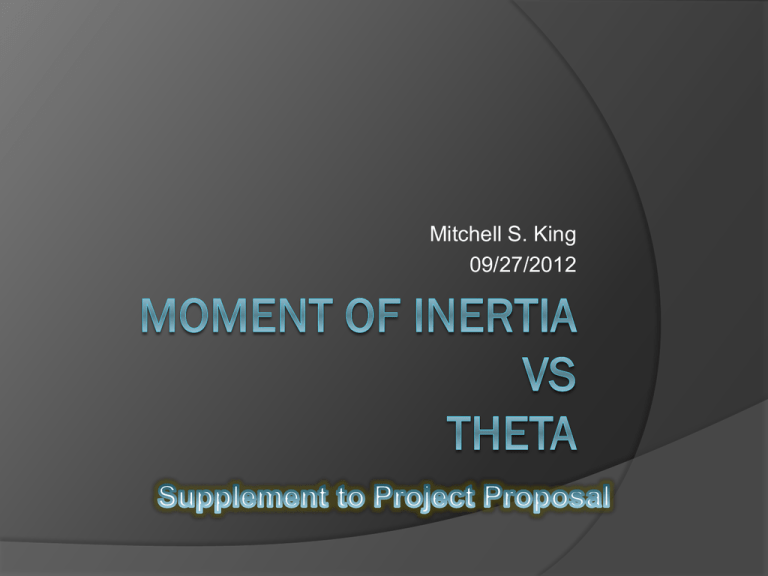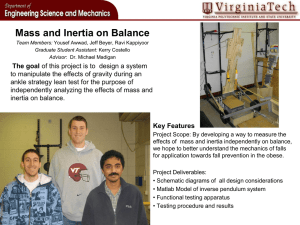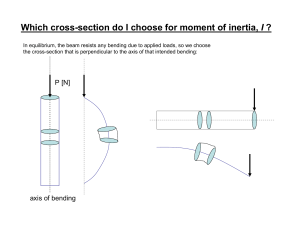Mitchell S. King 09/27/2012
advertisement

Mitchell S. King 09/27/2012 Reference Figure Y Y [ X and A-axes both coming out of the page. ] B B Z ϴ Z C C I took your advice… I looked into the case of a square beam. Turns out that for a square beam of rotating cross-section, the moment of inertia does not change. See next slide. I’ve derived these equations: (full derivation will be in 1st progress report) See Figure 1 For a square cross-section… = IZZ , so the 2nd and 3rd terms in Equation A and B are always zero. For a symmetrical cross-section whose centroid lies on its neutral axis, IYZ = 0. Therefore, the moment of inertia of a square beam will not change as its crosssection is rotated about the X-axis. I thought at first it to be bologna, but see next slide: IYY Moment of Inertia of a Square Cross-Section, Rotated 90° =h/√(2) Z Z h h This is the same value as when the cross-section appears as a square. In conclusion to the square… It seems as though the square crosssection with twists will not yield any useful conclusions for me, though I’m glad I discovered this now. The next slides show Equations A and B plotted for a 1.5” x 0.5” rectangular cross-section. Refer to Figure 1 for bending axis directions. Moment of Inertia Variation for a 1.5" x 0.5" Rectangular Beam with a 90° Twist 0.09 0.08 Moment of Inertia (in4) 0.07 0.06 0.05 Ibb Icc 0.04 Iyy Izz 0.03 0.02 0.01 0 0 10 20 30 40 50 Theta (Degrees) 60 70 80 90 Moment of Inertia Variation for a 1.5" x 0.5" Rectangular Beam with a 360° Twist 0.09 0.08 Moment of Inertia (in4) 0.07 0.06 0.05 Ibb Icc 0.04 Iyy Izz 0.03 0.02 0.01 0 0 90 180 Theta (Degrees) 270 360





